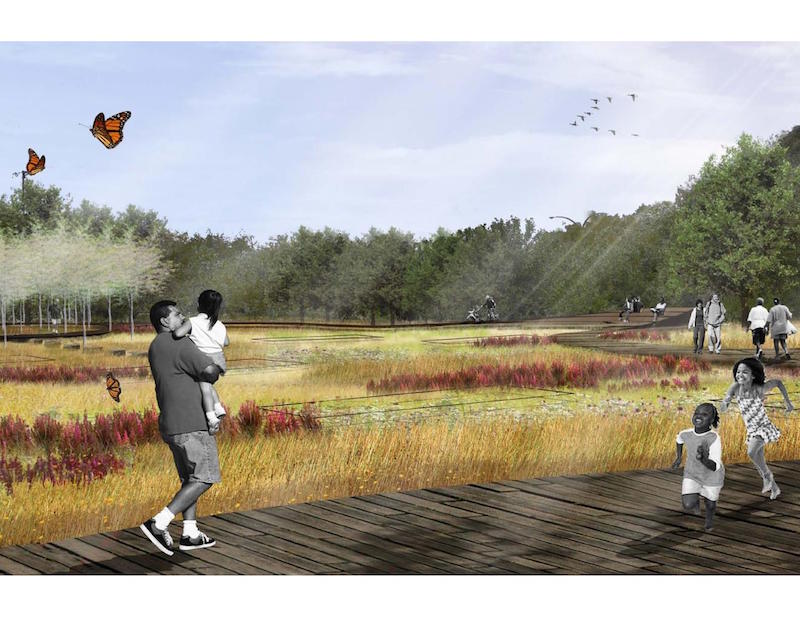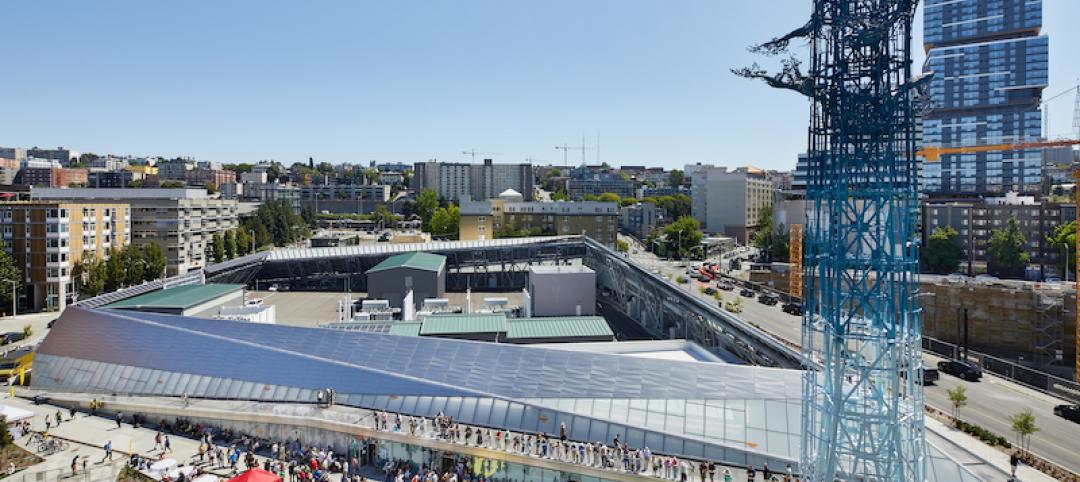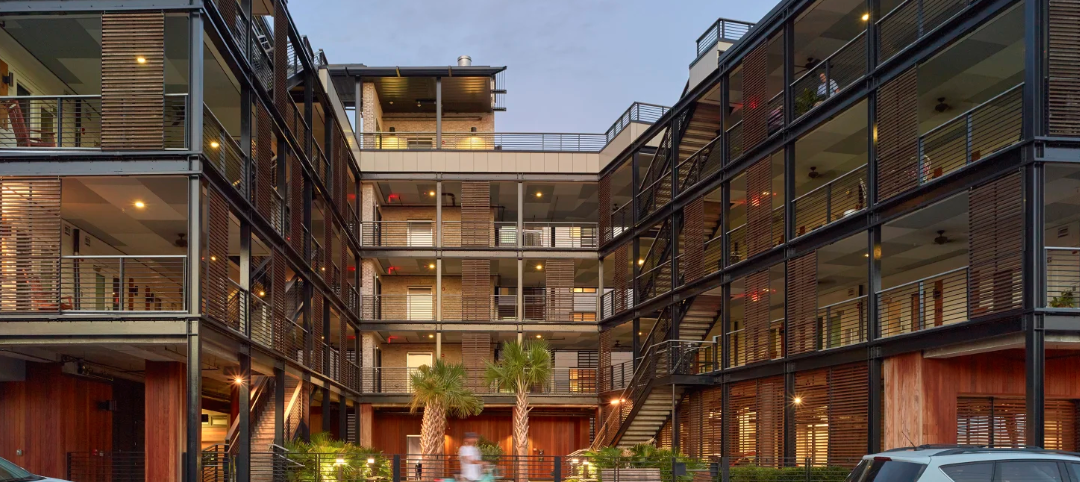The TKF Foundation is a 10-year-old private nonprofit that specializes in creating open, public sanctuaries. Since its founding, TKF has supported the creation of more than 130 Open Space Sacred Places in the Baltimore-Annapolis-Washington area alone.
“We envision a time when every urban community in the U.S. will provide people with opportunities for intimate, intentional daily doses of nearby urban nature through the creation of a system of nature spaces,” says the Foundation’s mission statement.
On May 20, The Naval Cemetery Landscape, a 1.7-acre public space on the site of a former Naval Cemetery on the waterfront in Brooklyn, N.Y., opened. This is the sixth nationally funded site where TKF and its research partners are studying the relationship of nature and human resiliency, and specifically the impact that proximity to nature has on a person’s ability to recover from psychological, social, or physiological stresses.
A team led by Denise Milstein, Director of Columbia University’s Master’s degree program in Sociology, is conducting the study at the cemetery site, which focuses on students of the Brooklyn Green School and on residents of Brooklyn Housing and Community Services.
“It is an excellent example of how green space can foster social cohesion, and the research being done here should offer insights for other city planners on the value such spaces bring to cities and their residents,” said Tom Stoner, TKF’s 81-year-old co-founder.
The Foundation selected the Naval Cemetery Landscape project from 126 that responded to its RFP for a grant. TKF visited more than 30 sites over an 18-month period before making its choice, says Jayne Trentanove, a Foundation spokesperson.
The project is the first open space of the Brooklyn Waterfront Greenway, which when completed will comprise a 27-mile route for pedestrians and cyclists that connects neighborhood parks and open spaces from the Greenpoint section of Brooklyn to Jamaica Bay, Queens.
The Naval Cemetery Landscape’s development was spearheaded by the nonprofit Brooklyn Greenway Initiative in partnership with the Brooklyn Navy Yard Development Corporation.
“As we approach Memorial Day, we are reminded of the significant military history of the Yard, and through the thoughtful landscape design, we hope to honor those roots,” said David Ehrenberg, President and CEO of the Brooklyn Navy Yard.
Marvel Architects and Nelson Byrd Woltz Landscape Architects designed the site in a way that respects its history as a burial ground. New York’s Department of State collaborated on this project, in that since 2004 it has awarded five Environmental Protection grants totaling $3,318,000 to the Brooklyn Greenway Initiative and the Brooklyn Borough President’s office.
The former Brooklyn Naval Hospital Cemetery site is located in the southeast corner of the Brooklyn Navy Yard. The cemetery had been active from 1834 through 1910, and was a burial site for more than 2,000 people. In 1926, the Navy sought to move all remains and inter them at nearby Cypress Hills National Cemetery.

The 1.7-acre Naval Cemetery Landscape is serving as a research site studying the importance of nearby nature of human resiliency, and to evaluate how proximity to landscape affects human well-being. Image: Marvel Architects and Nelson Byrd Woltz Landscape Architects.
Establishing a legacy
TKF Foundation will be closing its doors in December 2017, says Trentanove. But it has laid the groundwork for future urban landscape and restorative places through the research it has conducted over the years, the open spaces it has helped create, and through its national grant program that has provided $4.5 million for six research projects.
Aside from the naval cemetery site, its other grant projects include:
•The Green Road, a woodlands path that runs through the campus of Walter Reed National Military Medical Center in Bethesda, Md. It provides “an oasis of respite” for wounded soldiers and their families, as well as a patient-centered approach to healing;
•A Nature Place in Portland, Ore., where the roof of Legacy Emanuel Medical Center was converted into a 6,500-sf healing and restorative garden that’s open to the public, but whose main purpose is to provide a calming area for the facility’s Cardiovascular ICU and its Family Birthing Center. The effect of that space on patients and their families, on nurses, and on post-partum mothers is being studied;
•TKF has two “Landscapes of Resilience” research sites where the organization and its partners are analyzing how the natural environment can influence and help restore places in crisis. One site—Butterfly Garden & Overlook—is located in Joplin, Mo., on land where homes were wiped out by an E-5 tornado five years ago. A second, under development, is recreating a community garden and large gathering place on the edge of Jamaica Bay in Queens, N.Y. It is located adjacent to two senior citizen housing towers that were severely damaged by Hurricane Sandy;
•TKF is also funding research on why nature improves health outcomes. A team of researchers, led by Marc Berman of the University of Chicago, is evaluating the effects of nature on cognitive functioning. One of the team’s goals is to create a kind of guide that would inform urban planners about what elements they should include in future projects that are most likely to attract people.
A second study, conducted by a team from the University of Illinois at two of TKF’s older sites in Baltimore, is looking at different populations and how spending time in natural settings affects one’s immune system.
Related Stories
Giants 400 | Oct 3, 2019
Top 110 Cultural Sector Architecture Firms for 2019
Gensler, Populous, DLR Group, Stantec, and Perkins and Will top the rankings of the nation's largest cultural facility sector architecture and architecture engineering (AE) firms, as reported in Building Design+Construction's 2019 Giants 300 Report.
Giants 400 | Oct 3, 2019
2019 Cultural Facility Giants Report: New libraries are all about community
The future of libraries is less about being quiet and more about hands-on learning and face-to-face interactions. This and more cultural sector trends from BD+C's 2019 Giants 300 Report.
Cultural Facilities | Sep 11, 2019
The Kennedy Center expands for the first time since its 1971 debut
The REACH, with three pavilions on a generous lawn, adds openness and light to this performance space.
Cultural Facilities | Aug 28, 2019
Seattle’s newest substation doubles as a civic amenity
The Denny Substation includes 44,000 sf of open space that invites local residents and visitors to frequent the complex.
Cultural Facilities | Aug 23, 2019
Snøhetta to design Shanghai Grand Opera House
The Opera House is part of a new urban master plan for Shanghai.
Cultural Facilities | Aug 19, 2019
Tanglewood in the Berkshires is now a year-round facility
It recently debuted three climate-controlled event spaces and an indoor-outdoor café
Cultural Facilities | Jul 15, 2019
Steven Holl Architects and Architecture Acts to design Ostrava Concert Hall in the Czech Republic
Their winning proposal was supported by six of the seven members of the jury.
Cultural Facilities | Jul 11, 2019
BIG’s MÉCA combines three regional art agencies into one loop
The project gives Bordeaux an art-filled public space from the waterfront to the city’s new urban room.
Cultural Facilities | Jul 1, 2019
MAD Architects' proposal for the Yiwu Grand Theater will be built on the Dongyang River
MAD beat out four other proposals for the opportunity to design the theater.
Multifamily Housing | Jun 27, 2019
David Baker Architects wins 2019 HUD 'best in affordable housing' honor
The firm's Williams Terrace project is the first dedicated housing for Charleston, S.C.’s low-income seniors. It's one of four developments to win 2019 AIA/HUD housing awards.

















